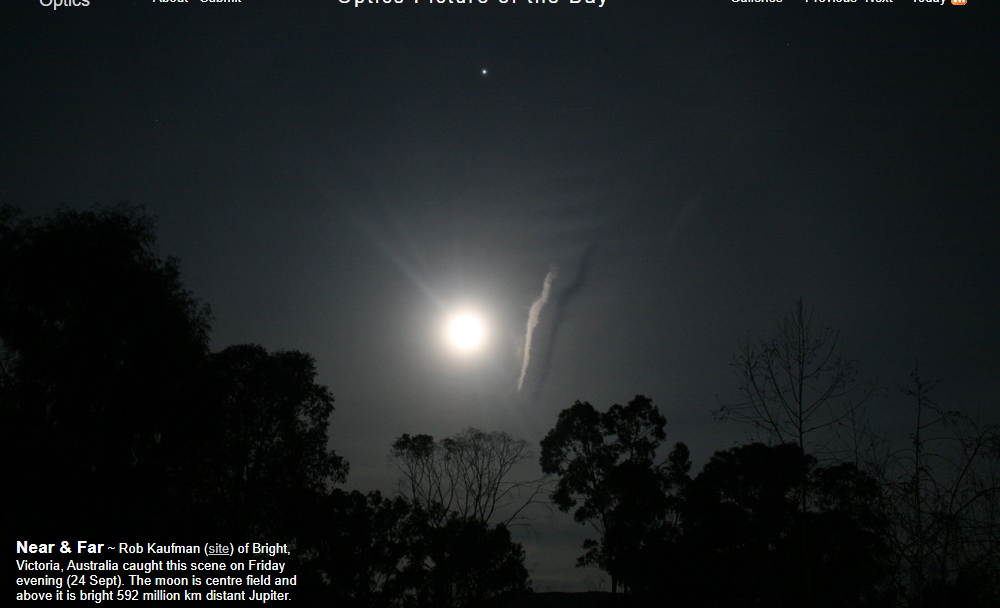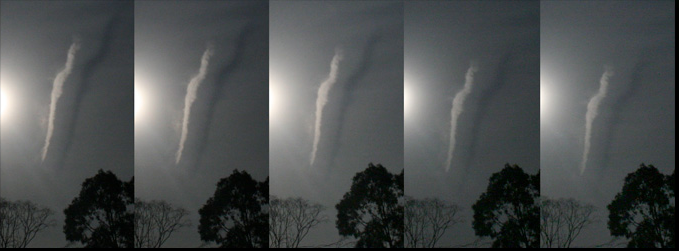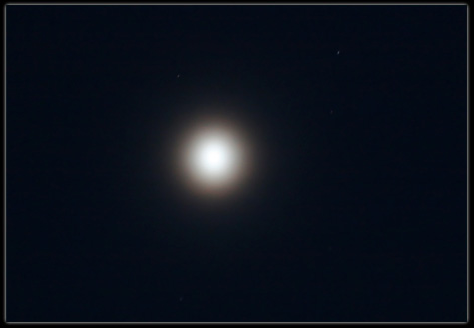OPOD - Near & Far
OPOD - Near & Far: A Captivating Atmospheric Optics Phenomenon
Have you ever gazed up at the sky and been mesmerized by the captivating dance of celestial bodies? The wonders of atmospheric optics never cease to amaze, and in this article, we delve into the intriguing phenomenon captured by Rob Kaufman in Bright, Victoria, Australia.
In the stunning photograph taken on a Friday evening, the moon takes center stage, while above it shines the radiant Jupiter, a staggering 592 million kilometers away. It's a breathtaking display of celestial proximity, reminding us of the vastness and beauty of our universe.
But that's not all. Our own atmosphere adds its touch to the spectacle, unveiling a myriad of other captivating effects. High up in the sky, between 5 and 10 kilometers above us, small ice crystals in a cold cirrus haze create a faint and diffuse 22° halo. These crystals, randomly oriented, scatter light in all directions, giving rise to this ethereal phenomenon.
As if that wasn't enough to ignite our sense of wonder, a drifting contrail makes an appearance, casting a shadow onto the same cirrus layer illuminated by the moon. This juxtaposition creates a striking contrast against the backdrop of the halo, captivating the observer's attention. Living below a major air route like the Sydney-Melbourne corridor, Rob Kaufman has witnessed his fair share of contrails, but this particular scene stands out as an extraordinary sight.
The evening held yet another surprise for Rob Kaufman. Earlier on, an aureole or corona encircled Venus, adding an extra touch of enchantment to the night sky. By comparing the corona's diameter to that of nearby stars, it was estimated to be approximately 25 arc minutes. This measurement suggests that the diffraction responsible for this phenomenon was caused by droplets or ice crystals, likely measuring around 150 microns or smaller.
To capture these celestial wonders, Rob Kaufman utilized a Canon 400D mounted on a tripod, setting his exposure to 4 seconds at ISO 800 and using an aperture of F/5.6. The resulting photographs are a testament to both the beauty of nature and the skill of the photographer.
As we immerse ourselves in the marvels of atmospheric optics, it's important to remember that these awe-inspiring phenomena are the result of the interplay between light and our atmosphere. The interaction of sunlight with ice crystals and air molecules gives rise to halos, coronas, and other optical delights that grace our skies.
In conclusion, the "OPOD - Near & Far" phenomenon captured by Rob Kaufman serves as a gentle reminder of the vastness and intricacies of our universe. By appreciating the beauty that surrounds us, we gain a deeper understanding of the wonders of atmospheric optics. So, next time you find yourself gazing up at the sky, take a moment to marvel at the celestial dance unfolding before your eyes, for it is in these fleeting moments that we truly grasp the magnificence of our world.

Near & Far ~ Rob Kaufman (site) of Bright, Victoria, Australia caught this scene on Friday evening (24 Sept). The moon is centre field and above it is bright 592 million km distant Jupiter.
Events in our own atmosphere produce the other effects. Small and randomly oriented ice crystals in high (5-10km) cold cirrus haze give a faint and diffuse 22° halo.
A higher drifting contrail throws its moon generated shadow down onto the same cirrus layer.
"I live in a country area directly below the main Sydney-Melbourne air route and consequently see many contrails, but I can't remember seeing anything quite as stark as this before. "



A bonus earlier in the evening was an aureole/corona around Venus.
"Gauging from the nearby stars, the corona's diameter is approximately 25 arc minutes". That suggests that the droplet or ice crystal (likely the latter) producing the diffraction were ~150 micron across or smaller.
Canon 400D on tripod, @ 200mm 4 sec exposure at ISO 800, F/5.6
Note: this article has been automatically converted from the old site and may not appear as intended. You can find the original article here.
Reference Atmospheric Optics
If you use any of the definitions, information, or data presented on Atmospheric Optics, please copy the link or reference below to properly credit us as the reference source. Thank you!
-
<a href="https://atoptics.co.uk/blog/opod-near-far/">OPOD - Near & Far</a>
-
"OPOD - Near & Far". Atmospheric Optics. Accessed on November 26, 2024. https://atoptics.co.uk/blog/opod-near-far/.
-
"OPOD - Near & Far". Atmospheric Optics, https://atoptics.co.uk/blog/opod-near-far/. Accessed 26 November, 2024
-
OPOD - Near & Far. Atmospheric Optics. Retrieved from https://atoptics.co.uk/blog/opod-near-far/.